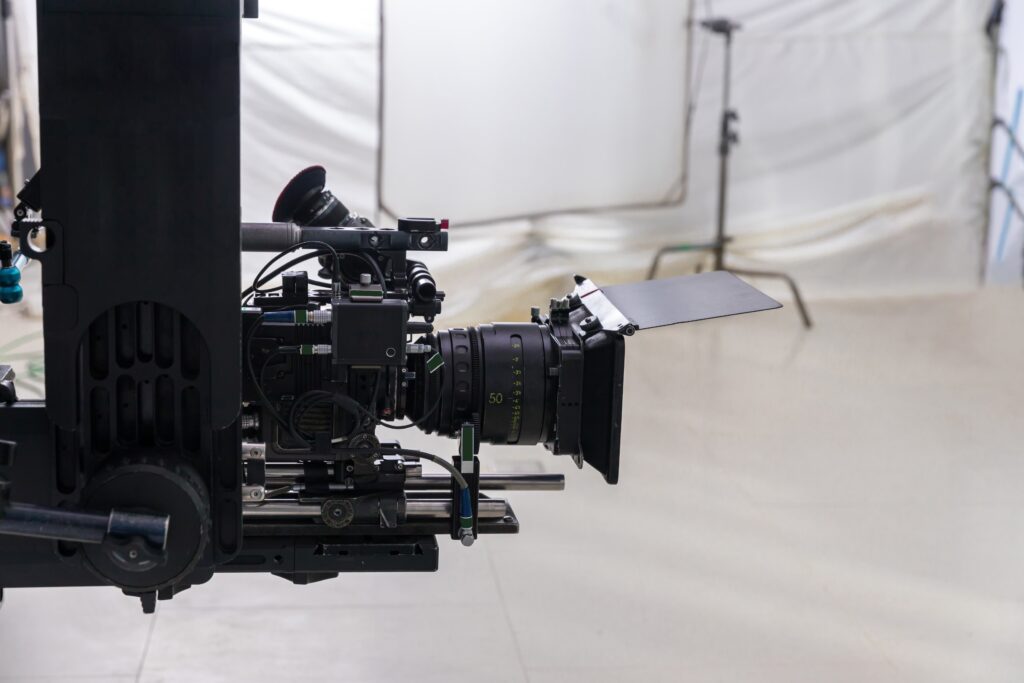Are you curious about how your favorite movies, TV shows, and commercials are made? Have you ever wondered what goes on behind the scenes of a successful production shoot? The production industry is a complex world that involves various stages of manufacturing and processes to bring an idea to life.
Starting with the initial manufacturing process, a successful production shoot requires careful planning and consideration to ensure that every detail is executed perfectly. From the selection of the cast and crew to the location scouting, the production process involves a wide range of activities.
However, the manufacturing and process stages are where the real work begins. In this section, we will take a closer look at the intricate details of a successful production shoot. We will explore the various stages, including pre-production, production, and post-production, and the critical role they play in bringing a production to life.
So, buckle up and get ready to learn the ins and outs of production manufacturing and processes. By the end of this section, you will have a better understanding of what it takes to create a successful production shoot.
So, let’s dive in and discover the world of production, manufacturing, and process.
The Efficiency of Production Operations
When it comes to production, efficiency is key. Maximizing productivity while minimizing waste and costs is essential to the success of any operation. But how can you optimize your production process to achieve optimal efficiency?
One strategy is to analyze your current operations and identify areas that need improvement. This may involve streamlining processes, eliminating redundancies, and minimizing downtime. By optimizing your workflow, you can increase productivity and reduce waste and costs.
“Efficiency is doing things right; effectiveness is doing the right things.” – Peter Drucker
Another way to enhance efficiency is to invest in automation. Automated systems can perform tasks faster and more accurately than humans, freeing up valuable time and resources. This can be particularly useful for repetitive, time-consuming tasks.
Optimizing production also involves managing resources effectively. This includes monitoring inventory levels, scheduling maintenance, and coordinating with suppliers. By staying ahead of potential shortages and anticipating issues, you can minimize disruptions and keep production running smoothly.
Finally, technology can play a critical role in optimizing production operations. From advanced software to state-of-the-art equipment, technology can help you achieve greater efficiency and productivity. By embracing innovation and staying up to date with the latest developments, you can ensure your production process is always at the cutting edge.
The Art of Supply Chain Management
When it comes to successful manufacturing, effective supply chain management is crucial. The supply chain encompasses the entire process of acquiring raw materials, transforming them into finished products, and delivering them to customers.
Essentially, the supply chain is the backbone of the production process. A well-managed supply chain ensures that materials are sourced efficiently, inventory is managed effectively, and suppliers are coordinated to meet the demands of production operations.
“The key to effective supply chain management is ensuring that all the pieces are working together seamlessly.”
From sourcing materials to managing transportation logistics, supply chain management involves a range of interconnected processes. To be successful, manufacturers need to have a clear understanding of each stage of the supply chain and the role it plays in the overall production process.
In addition, manufacturers must be able to adapt to changing circumstances in the supply chain. This might involve finding alternative suppliers or materials, adjusting production timelines, or implementing new technology to streamline operations.
The Components of a Successful Supply Chain
There are several key components that are essential to a successful supply chain:
- Sourcing: Efficient sourcing is key to ensuring that raw materials are readily available when needed.
- Inventory Management: Effective inventory management helps to minimize waste and ensure that materials are available when needed.
- Supplier Coordination: Coordinating with suppliers is essential for ensuring that materials are delivered on time and according to specifications.
- Transportation Logistics: Managing transportation logistics is essential for getting raw materials to the production site and delivering finished products to customers in a timely and cost-effective manner.
By focusing on each of these components and ensuring that they work together seamlessly, manufacturers can achieve a well-managed and efficient supply chain that drives successful production outcomes.
Maximizing Output: Strategies for Increased Production
Manufacturing output is the cornerstone of a successful production shoot. However, achieving optimal production levels can be a daunting task. Fortunately, there are several strategies that can be employed to maximize output and increase efficiency.
Streamline Processes
Streamlining processes is a critical step in maximizing output. By identifying and eliminating inefficiencies in the manufacturing process, you can significantly improve production levels. One effective way to streamline processes is by analyzing each step in the production line and identifying areas where time can be saved. For example, reducing the time it takes to set up and changeover machines can have a significant impact on overall output.
Implement Automation
Automation can also be instrumental in optimizing production capabilities. By automating repetitive and time-consuming tasks, you can free up valuable resources and increase output. Automation technologies such as robotics, conveyors, and sortation systems can increase the speed and accuracy of production, ensuring that products are manufactured efficiently and cost-effectively.
Utilize Technology
Technology can also be a powerful tool for maximizing output. By leveraging software tools such as production planning and scheduling software, you can optimize the production process and ensure that resources are utilized efficiently. Additionally, technology such as sensors and data analytics can provide valuable insights into production operations, helping you identify areas for improvement and drive continuous optimization.
Overall, employing these strategies can help you maximize output and increase efficiency in your manufacturing operations. By streamlining processes, implementing automation, and utilizing technology, you can achieve optimal production levels and ensure that your production shoot is a success.
The Art of Effective Manufacturing Processes
The key to achieving success in the manufacturing industry lies in effective processes. Without a well-defined workflow, operations can quickly become chaotic and unproductive. To ensure that your manufacturing processes are optimized, there are several key considerations to keep in mind:
Continuous Improvement
Continuous improvement is a critical component of effective manufacturing processes. By regularly evaluating and refining your workflows, you can identify areas for improvement and implement changes that enhance production output and efficiency. This can involve anything from streamlining processes to investing in new technology that can optimize your operations.
Quality Control Measures
Another essential aspect of effective manufacturing processes is quality control measures. By implementing a robust quality control system, you can ensure that your products meet the necessary standards and specifications. This can include everything from regular inspections and audits to implementing a rigorous testing process.
The Role of Innovation
Finally, innovation is key to driving successful production outcomes. By embracing new ideas and technologies, you can stay ahead of the competition and ensure that your manufacturing processes are always optimized for success. This can involve anything from implementing automated processes to incorporating the latest manufacturing technologies into your operations.
By considering these key factors and implementing effective manufacturing processes, you can achieve success and enhance your production capabilities. With a well-defined workflow and a commitment to continuous improvement, you can stay competitive in the fast-paced world of manufacturing.
The Dynamic World of Production
As you have learned throughout this article, the production industry is a complex and ever-evolving landscape that requires a blend of creativity, efficiency, and strategic planning. Whether you are involved in manufacturing, supply chain management, or assembly operations, staying ahead of the game is crucial for achieving success.
With the advancements in technology and automation, there has been a significant transformation in the manufacturing and production process. Today, there is an increased focus on sustainability, quality control, and continuous improvement to strengthen the manufacturing process.
As a professional in the industry, it’s essential to stay up-to-date with the latest trends, techniques, and processes that can streamline production and increase efficiency. By embracing automation, investing in the right technology, and implementing effective management strategies, you can take your production quality to the next level.
Remember that production is more than just a job; it is a passion for bringing ideas to life, and it requires a commitment to excellence in every step of the process. So, keep pushing the envelope, stay hungry for knowledge, and never settle for mediocrity.
As you navigate the dynamic world of production, always remember that you are part of a community of professionals who share your passion for manufacturing and producing high-quality goods. So, network, learn, and grow with your peers to achieve greater success.
FAQ
Q: What is a production shoot?
A: A production shoot is the process of capturing footage and recording audio for a film, TV show, commercial, or any other type of video production.
Q: What is the manufacturing process in a production shoot?
A: The manufacturing process in a production shoot involves assembling and setting up the necessary equipment, such as cameras, lights, and microphones, to capture the desired footage.
Q: How can I optimize production operations for efficiency?
A: To optimize production operations for efficiency, you can implement strategies such as streamlining processes, ensuring proper training for staff, and utilizing technology to automate certain tasks.
Q: What is supply chain management in the production industry?
A: Supply chain management in the production industry involves overseeing the flow of materials and components required for production, managing inventory, and coordinating with suppliers to ensure timely delivery.
Q: How can I maximize output and increase production?
A: You can maximize output and increase production by implementing techniques such as improving workflow, utilizing data analysis to identify bottlenecks, and investing in equipment or technology that enhances productivity.
Q: Why are effective manufacturing processes important?
A: Effective manufacturing processes are important because they ensure consistency in quality, minimize waste, increase efficiency, and ultimately contribute to the overall success of a production.
Q: What should I know about the dynamic world of production?
A: The production industry is constantly evolving, driven by technological advancements, changing consumer demands, and creative innovation. It requires a combination of skills, strategic planning, and adaptation to thrive in this dynamic environment.




